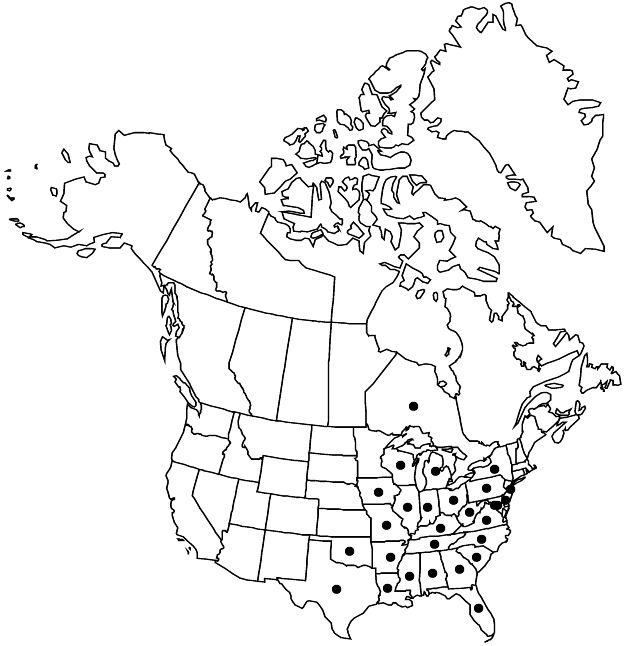Hypericum prolificum
Mant. Pl. 1: 106. 1767.
Shrubs, erect or ± diffuse, forming rounded or irregular bush, (2–) 7.5–15 (–20) dm. Stems: internodes 4-lined at first, then 2-lined to terete. Leaf-blades narrowly oblong to narrowly elliptic-oblanceolate, 30–70 × 6–15 mm, base articulated, attenuate to narrowly cuneate, margins plane to recurved, apex rounded-apiculate to acute, midrib with 10–16 pairs of branches. Inflorescences cylindric, (1–) 3–7 (–9) -flowered from apical node, with paired single flowers or triads or 1–3 (–7) -flowered branches from 2+ proximal nodes. Flowers 15–30 mm diam.; sepals deciduous, not enclosing capsule, 5, elliptic to obovate or oblanceolate-spatulate, unequal or subequal, 4–8 × 1.5–4 mm; petals 5, golden yellow, obovate to oblanceolate-spatulate, 7–15 mm; stamens deciduous, 150–500; ovary 3 (–5) -merous, placentation incompletely axile. Capsules usually narrowly ovoid-conic to ovoid, rarely ellipsoid, 7–13 × 4–7 mm. Seeds carinate, 1.5–2 mm; testa linear-reticulate. 2n = 18.
Phenology: Flowering summer (Jun–Sep).
Habitat: Rocky slopes, embankments, dry stream bottoms, woodland (in north), on limestone or granite
Elevation: 50–600+ m
Distribution

Ont., Ala., Ark., Del., D.C., Fla., Ga., Ill., Ind., Iowa, Ky., La., Md., Mich., Miss., Mo., N.J., N.Y., N.C., Ohio, Okla., Pa., S.C., Tenn., Tex., Va., W.Va., Wis.
Discussion
Hypericum prolificum is variable, the most luxuriant form being found in the southwestern part of its range. Natural hybrids have not been recorded; it hybridizes in gardens with H. densiflorum (H. x\arnoldianum Rehder), H. frondosum, H. kalmianum, and H. lobocarpum (H. x\dawsonianum Rehder).
Selected References
None.